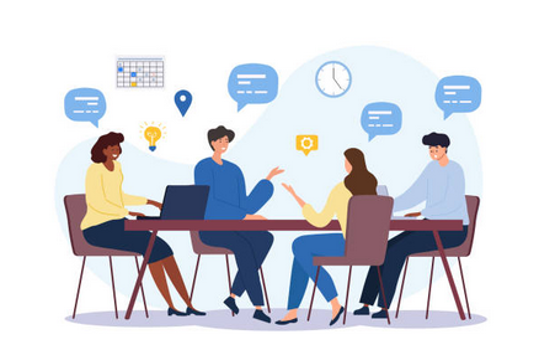 Imagine a world where all legal professionals are both engaged and well. Law students actively participate in their classes and project collaborations, fostering an enthusiasm for their impending careers. Law firm attorneys strike a healthy work-life balance, continually developing their professional skills, and understanding the impact their work makes. Legal departments work in harmony with business units to safeguard company interests, maintaining an active role in the organization’s day-to-day tasks.
Imagine a world where all legal professionals are both engaged and well. Law students actively participate in their classes and project collaborations, fostering an enthusiasm for their impending careers. Law firm attorneys strike a healthy work-life balance, continually developing their professional skills, and understanding the impact their work makes. Legal departments work in harmony with business units to safeguard company interests, maintaining an active role in the organization’s day-to-day tasks.
Before we dive deeper into the dynamics to create an optimal work environment for legal professionals, it is important to recognize and distinguish between the interrelated concepts of ‘workforce engagement’ and ‘workforce well-being’. Each of these terms offers unique insights and has distinct implications for the professional development and wellness culture in the legal profession. To effectively encourage a more productive and harmonious legal landscape, let’s explore the respective roles of engagement and well-being to gain a clearer understanding of their effects.
Workforce well-being refers to the physical, psychological, and social health of workers, the elements that influence their happiness, job satisfaction and productivity. Workforce engagement, on the other hand, is about people’s involvement, commitment and enthusiasm to their work and workplace. It’s the magnetic pull prompting team members to willingly “go the extra mile.” Though interlinked, well-being is more about the condition of the individual, and engagement about their connection with their profession and employer.
Engagement is one of those “you know it when you see it” phenomena. When we talk about actively engaged team members, we’re talking about passionate dynamos. They’re resilient, take initiative, and harbor a strong pride for their organizations. They collaborate, care for their classmates or colleagues and are generously creative.
Simply engaged team members meet the standard description for their role, are comfortable with routines, work independently and prefer to follow rather than lead. They do what is expected, but not a lot more. Unfortunately, media likes to label these folks as “quiet quitters,” because they’re not going over and above, which can be unfair and imply they are a lost cause when it comes to increasing engagement.
Last, but not least, there are the actively disengaged ones. These are the mavericks that resist change, decline growth opportunities, and can make the workplace a challenging environment. They’re the type to broadcast their dissatisfaction and might even try to rally others to their cause, potentially generating a spiral of negativity.
It is important to understand that a person can shift between states. A person who has been highly engaged and working non-stop for an extended period may move into being simply engaged. Feelings of exhaustion, lack of motivation, lack of decision-making opportunities, high stress levels, poor relationships and dulling of purpose may be causing them to pump the brakes. These individuals – the formerly engaged – are the ones we want to be sure to lean into. Avoid writing them off as quiet quitters. With some recovery time and investment by their career counselor or manager, they could be back to being highly engaged in no time.
Having established the significance of both engagement and well-being and their interconnected influence on the legal profession, we now turn our attention to practical strategies that can be utilized to enhance employee engagement. Whether you are an individual facing challenges in this domain or a manager aiming to foster improved engagement within your team, there are actionable steps available to make a positive impact.
We present an array of best practices that can be adopted from both individual and managerial perspectives in the areas of Productivity, Attitude & Energy, and Teaming & Collaboration.
Productivity
Individual
- Prioritize training: Equip yourself with the necessary knowledge and skills to excel. By partaking in regular training sessions, you can bridge any skill gaps, empower yourself, and understand your importance to the organization.
- Seek the bigger picture: When receiving an assignment or working on a project, ask how it fits with others’ work or how it will help to accomplish objectives for your stakeholder or client. This will deepen its sense of meaning for you.
Manager
- Offer input on deadlines: Rather than deploying a top-down approach, collaborate with your team to set meaningful deadlines. Not only will this encourage people to take ownership and responsibility, but it also ensures everyone is on board and prepared.
- Create moments of levity: Light-heartedness can act as a pressure release valve. Foster an environment where laughter isn’t just welcome, it’s encouraged. This maintains morale, enhances creativity, and serves as a gentle reminder that we’re all in this together.
Attitude & Energy
Individual
- Understand the impact of your work: Be it a social, economic, or internal change, realize that you are making a difference. This awareness not only reinforces your purpose but also stimulates your commitment and kindles that internal fire for you to achieve more.
- Combat boredom: If you find your tasks monotonous or no longer fulfilling, speak to your superiors. See if you can take on a stretch assignment or work on something different. Boreout leads to burnout.
Manager
- Enable discretion on assignments: Rather than assigning work in a one-way fashion, engage in conversation with team members to afford input on which and how many assignments to take on. Also, ensure the team members that it can be okay to decline assignments occasionally.
- Express ample and specific appreciation: Recognize the small wins as well as the big ones. Specific acknowledgments validate personal efforts, drive motivation, and build an environment of appreciation.
Teaming & Collaboration
Individual
- Communicate, communicate, communicate: Regular, transparent communication bridges gaps, clears confusion and fosters trust amongst team members. Regularly exchanging information with your colleagues fosters a reciprocal culture of knowledge sharing.
- Cultivate trust: Consistently deliver on your commitments and demonstrate reliability in your actions. Offer respect and support at all times. Developing trust within a team begins with you.
Manager
- Invite all to contribute: Inclusion is a powerful motivator. Encourage team members to voice their ideas, express their concerns, and contribute to the decision-making process. This cultivates a vibrant and robust learning culture.
- Nip negativity in the bud: Maintain a positive work atmosphere by addressing conflicts and negativity swiftly and sensitively. Open, honest dialogue is your friend here.
Nurturing workforce engagement and well-being is vital in law. Recognizing the fluidity of engagement levels, from highly active to disengaged, can positively shape the legal workspace. Key areas include Productivity, Attitude & Energy, and Team & Collaboration, where practices like ongoing training, recognizing contributions, and transparent communication are essential. These efforts not only enhance your satisfaction and well-being but also improve collective productivity, laying the foundation for a thriving legal career and community.

